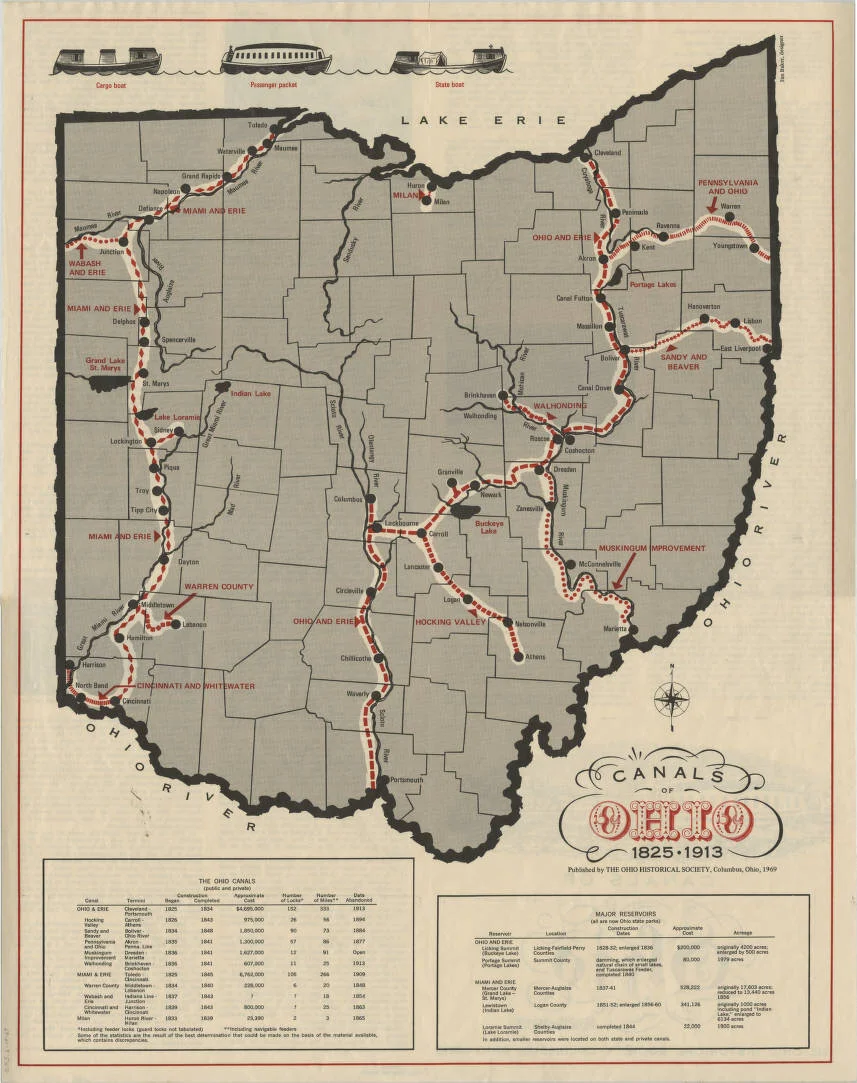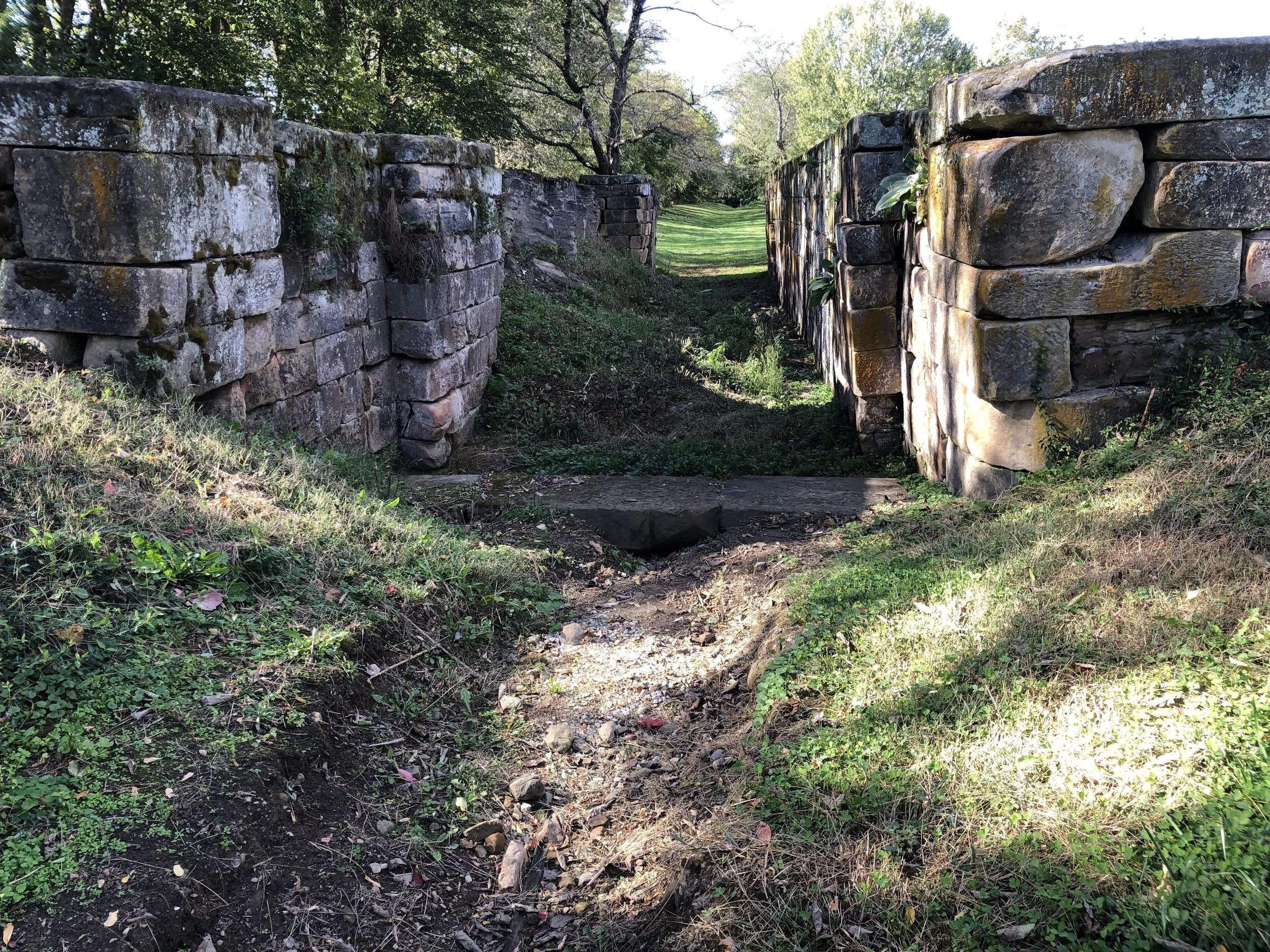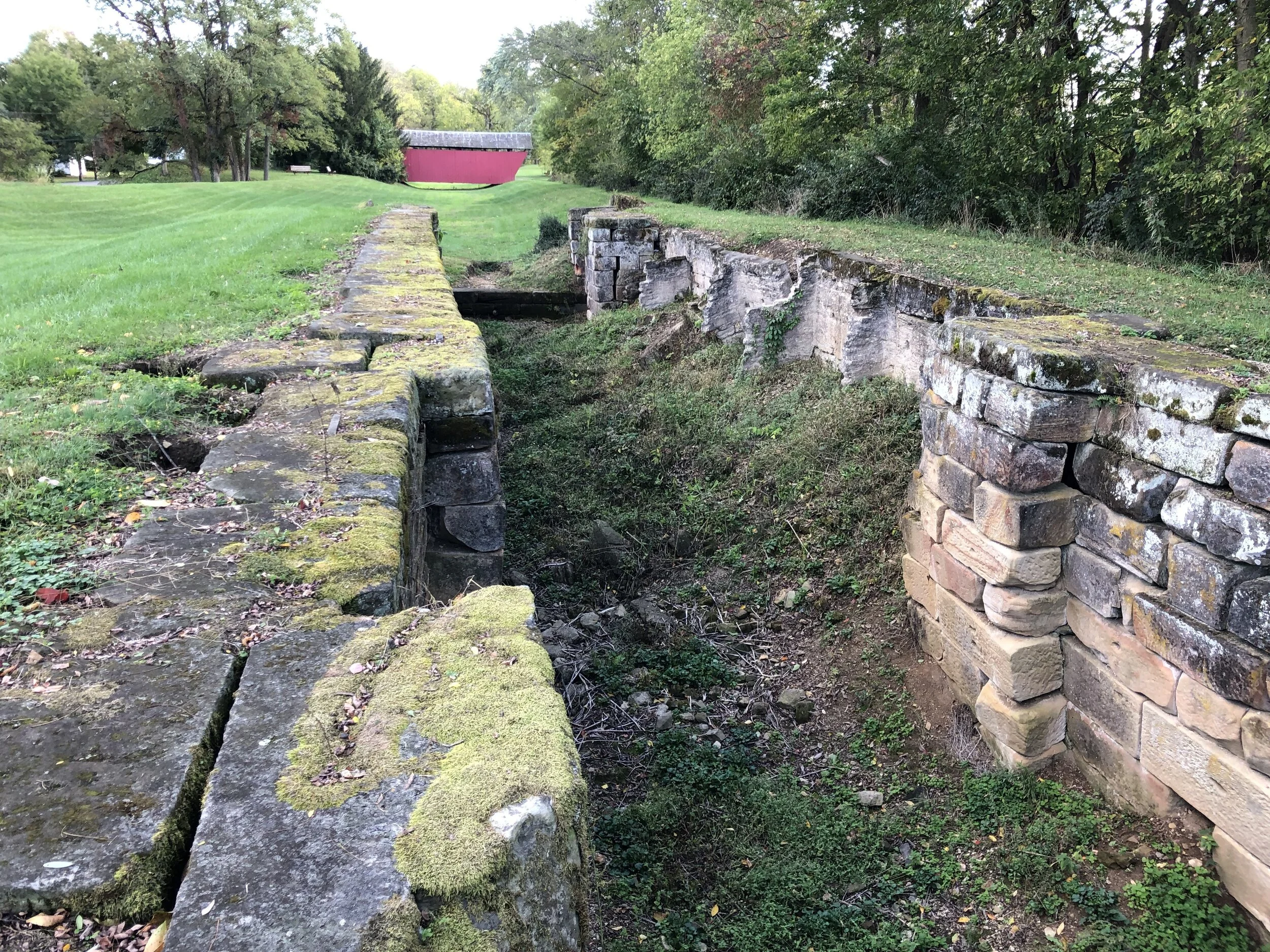Canal Rabbit Hole
Over the weekend, The Captain and I had occasion to visit a group of locks on the old Ohio and Erie Canal. After an afternoon of looking at covered bridges, we made one last stop at the Lockville Park in Fairfield County, Ohio, to see the Hartman No. 2 Covered Bridge. Driving up to the park, we exited the car and there they were, under the shade of some old trees, surrounded by soon to be harvested corn fields, with no water to be seen, the South 11, 12, and 13 locks. The 8 acre park contained the covered bridge The Captain was after, but the locks were the real show. After walking up and down the old tow path, taking in the cut stone and earthworks, and the covered bridge, we headed home for dinner and the first internet deep-dive on the Ohio canals. The following is a preview of rabbit hole I’ll be in this winter.
The well preserved South 13 Ohio-Erie Canal Lock in Lockville, Ohio.
Compared to our modern internet-air-highway-rail transport system, it is hard to imagine a time when commerce moved at 3 miles an hour, but in the first half of the 19th century, that was considered speedy. It was considered so important that the Ohio legislature took out loans and risked going bankrupt to build the Ohio and Erie Canal and the Miami and Erie Canal.
The canals significantly reduced the time and expense of shipping goods around the state and to markets on the east coast. It also shortened travel time for passengers. Travel time from Cleveland to Portsmouth went from a week or more to a few days. At its peak in the 1850s, the system maintained 1000 miles of waterways.
The adjacent South 12 Lock slowly collapsing in on itself.
The Canal system in Ohio persisted into the 20th century, but rail and road travel eventually made it obsolete. In 1913, after a bout of extreme snow and rain resulted in extensive damaged the canal earthworks, the state decided not to make repairs and let the canals fade away. Many of the locks and parts of the canals still exist today. Some even have functional components and tour boats. Can you say road trip?
The preserved Hartman No. 2 spanning the canal ditch. It originally crossed Raccoon Creek at Wheeling Road east of Lancaster, Ohio.



